A 5 kg block B is suspended from a cord attached to a 40 kg cart A . Find the accelerations of both the block and cart . ( All surfaces are frictionles ) ( g = 10m/s2)
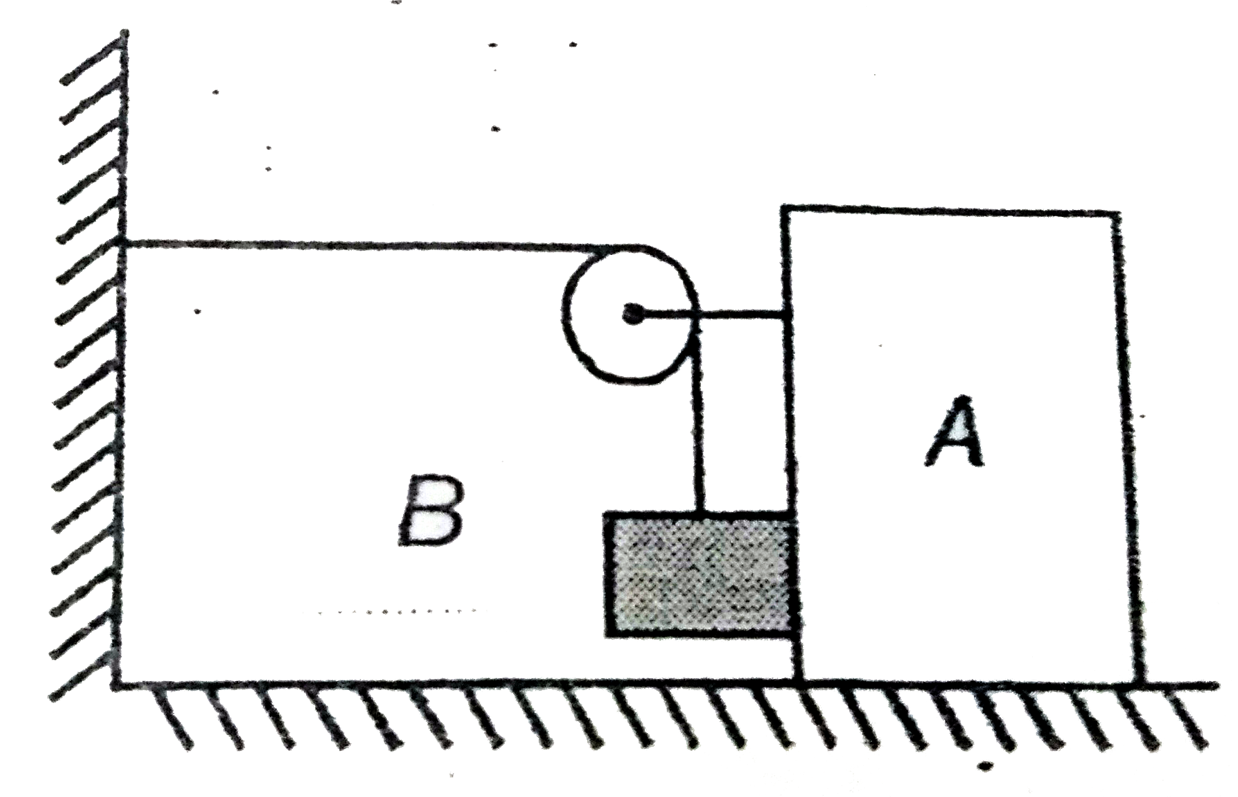
Forces on cart A
(1) 40 g downward
(2) normal force n1 by the floor ,
(3) Normal force N2 by the block
(4) Tension force due to string
Let acceleration of the cart is 'a' toward left then
TN2=40a …(i)
Now let us observe the block w.r.t. cart . as string is inextensible . Acceleration of the block w.r.t. to cart will be 'a' downcard . now forces on the block are
(i) 5g downward due to gravity
(ii) Tension force due to string
(iii) N2 normal force from the cart
(iv) Pseudo force ( as block is observed w.r.t. accelerated frame ) 5a towards right
For the block ,
N2=5a ..(ii)
5g−T=5a ... (iii)
solving equation (i),(ii),(iii)
a=1m/s
So acceleration of the cart
→ac=−ˆim/s2
And acceleration of the block w.r.t cart
→aBc=−→aB−→ac
−ˆj=−→aB+ˆi
or , −→aB=−(ˆi+ˆj)or,aB=√2m/s
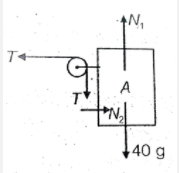
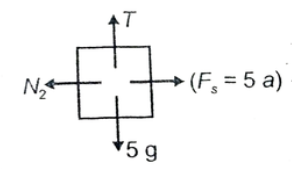
Topper's Solved these Questions
- LAWS OF MOTIONBOOK - AAKASH INSTITUTE ENGLISHCHAPTER - LAWS OF MOTIONEXERCISE - Illustration
7 Videos
- LAWS OF MOTIONBOOK - AAKASH INSTITUTE ENGLISHCHAPTER - LAWS OF MOTIONEXERCISE - TRY YOURSELF
69 Videos
- KINETIC THEORYBOOK - AAKASH INSTITUTE ENGLISHCHAPTER - KINETIC THEORYEXERCISE - EXERCISE (ASSIGNMENT) SECTION - D Assertion - Reason Type Questions
10 Videos
- MAGNETISM AND MATTER BOOK - AAKASH INSTITUTE ENGLISHCHAPTER - MAGNETISM AND MATTER EXERCISE - ASSIGNMENT (SECTION D)
26 Videos
Similar Questions
A 20kg block B is suspended from a cord attached to a 40kg cart A. The ratio of the acceleration of the cart in cases (i) & (ii) shown in figure immediately after the system is released from rest is _________ . (neglect friction)
 .
.
View SolutionThe magnitudes of accelerations of blocks of mass 2 kg and 4 kg are respectively . ( Pulleys and threads are massless) ( g = 10 m/s2)
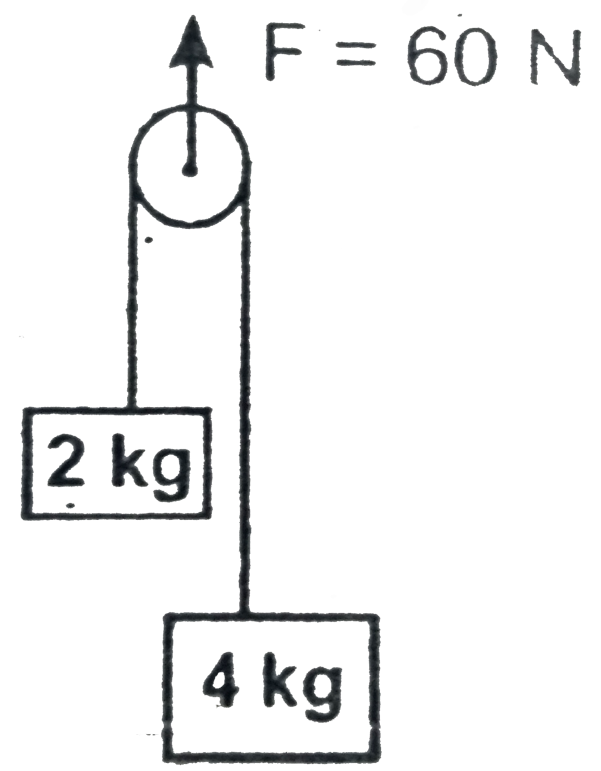
View SolutionTwo blocks of masses 10 kg and 9 kg are connected with light string which is passing over an ideal pulley as shown in figure. If system is released from rest then the acceleration of 9 kg block at the given instant is about (Assume all the surfaces are smooth and g=10ms2)
View SolutionIn figure calculate the linear acceleration of the blocks.
Mass of block B=8kg
mass of disc shaped pulley =2kg (take g=10m/s2)

View SolutionA block B of mass M is suspended from a cord of length l attached to a cart A of mass M as shown in the figure. The horizontal surface on which the cart moves is smooth. Initially both the cart and the block are at rest in the position shown. Now B is released. Take M=m=2kg,θ=45∘andg=10m/s2.
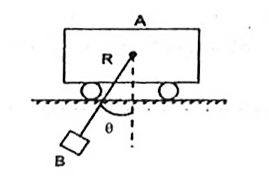
The magnitude of acceleration of B (with respect to cart) immediately after the system is released from rest is
View SolutionA block B of mass M is suspended from a cord of length l attached to a cart A of mass M as shown in the figure. The horizontal surface on which the cart moves is smooth. Initially both the cart and the block are at rest in the position shown. Now B is released. Take M=m=2kg,θ=45∘andg=10m/s2.
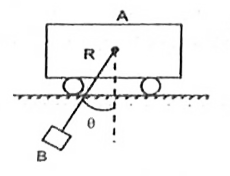
The acceleration of the cart immediately after the system is released from rest is
View SolutionA block B of mass M is suspended from a cord of length l attached to a cart A of mass M as shown in the figure. The horizontal surface on which the cart moves is smooth. Initially both the cart and the block are at rest in the position shown. Now B is released. Take M=m=2kg,θ=45∘andg=10m/s2.
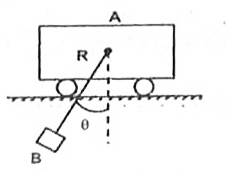
The tension in the cord immediately after the system is released from rest is
View SolutionConsider the situation shown in figure .Both the pulleys and the string and light and all the surfaces are smooth.
(a) Find the acceleration of 1kg block.
(b) Find the tension in the string. (g=10m/s2).
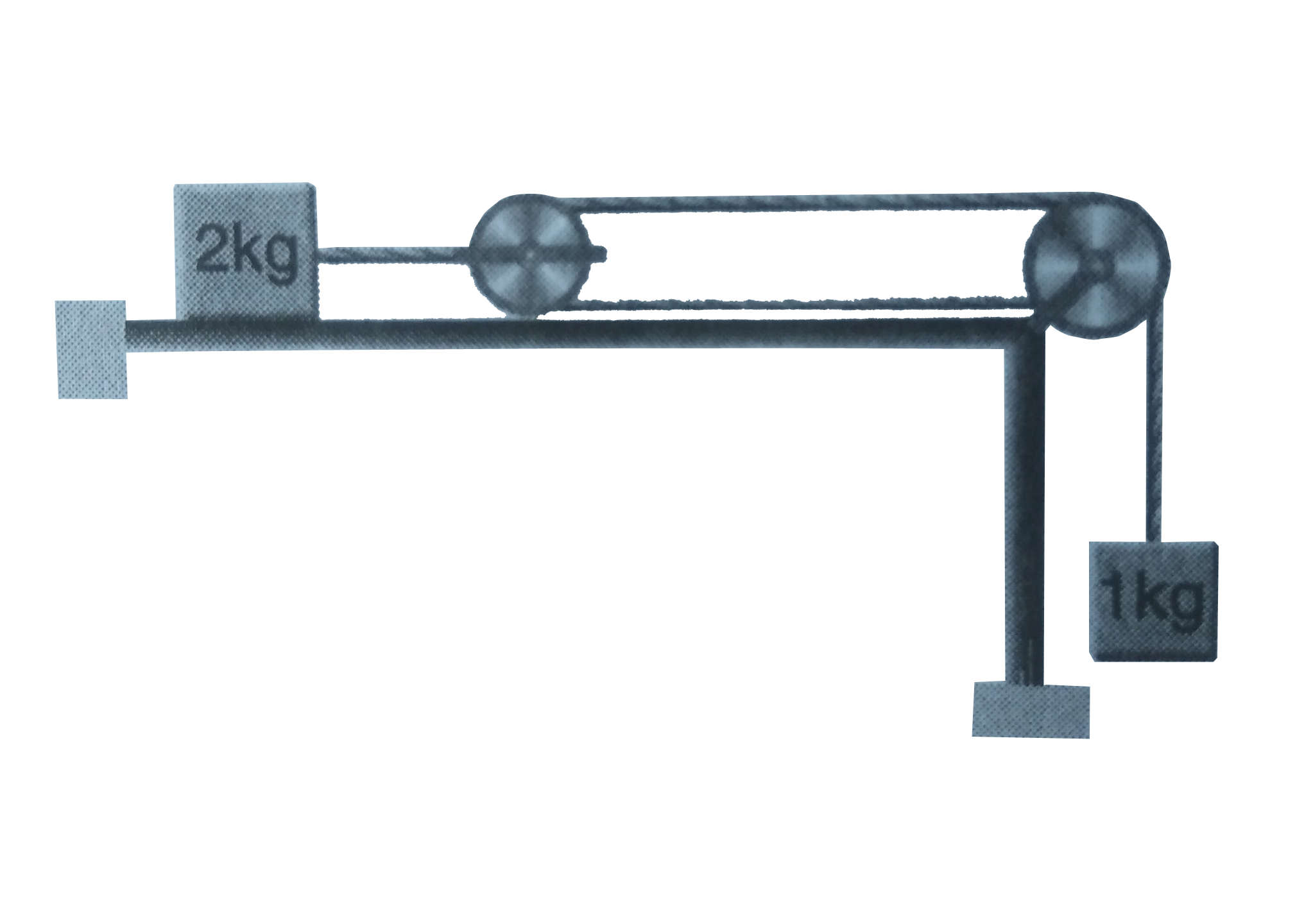
View SolutionA 2kg block is placed over a 5kg block and both are placed on a smooth horizontal surface. The coefficient of friction between the blocks is 0.10. Find the acceleration of the two blocks if a horizontal force of 14N is applied to the upper block (g = 10ms−2).
View SolutionTwo block A and B are arrenged as shown in figure (mA=5kgandmB=10kg) Find the acceleration of blocks if F=40N
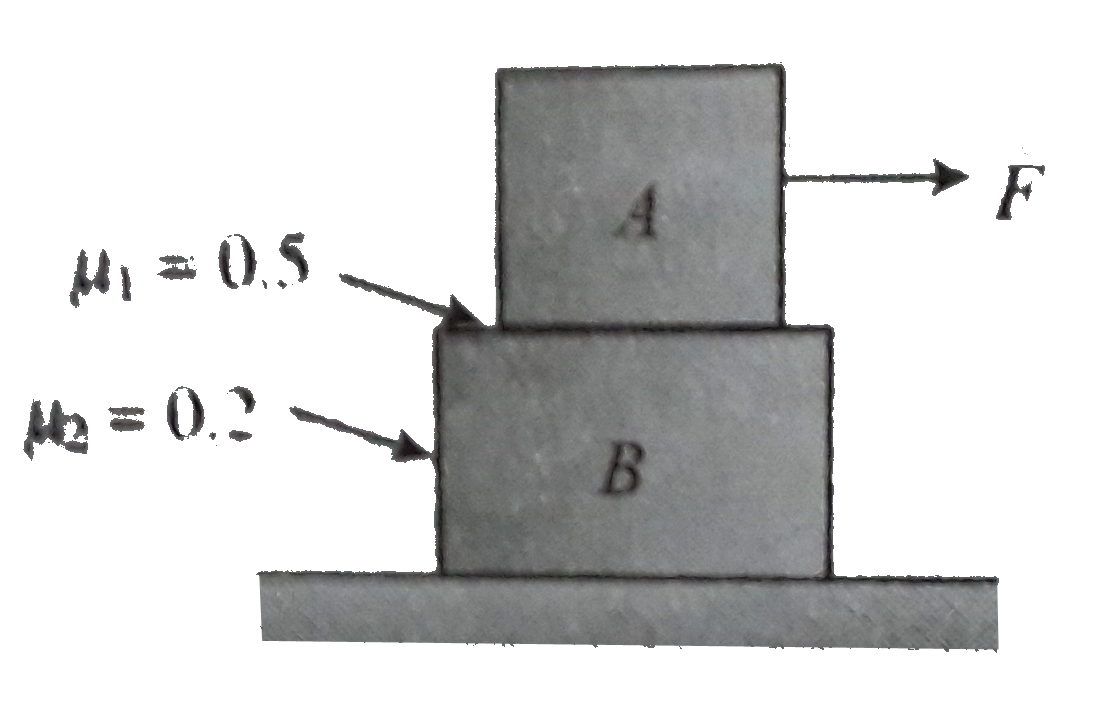
View Solution
